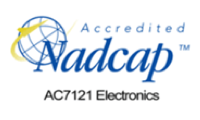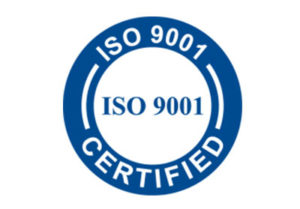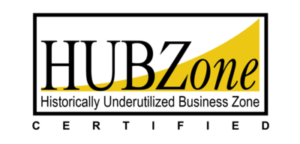In today’s manufacturing environment, IT is an increasingly powerful tool for addressing a range of issues from cybersecurity to production and operation efficiencies.
In this episode of Wired Success, Mark Cessar and Troy Funte discuss the value and benefits of remaining nimble in a constantly evolving tech landscape and utilizing catered solutions to quickly resolve issues.
Mark:
Welcome back for another episode of “Wired for Success” presented by Liberty Electronics. My name is Mark Cessar and I’m here with Troy Fonte, he is an IT manager and has been with the company for 20 years. I’m just going to open it up and let you talk a little bit about the benefits of a custom IT strategy. Talk about maybe the history here at Liberty Electronics and in the industry?
Troy:
All right. Thanks, Mark it’s good to be here and I’ve been the IT manager here for a number of years and been employed here for 20 years. And in that time I was hired to help us adapt to a system that was actually not compliant with Y2K. It was a mainframe system back in the 80s and unfortunately that caused our system to basically blow up and reset our orders to 1970 starting on January 1st. Not a good thing. So what we did was we went and searched for a can solution that would cover our needs for ERP, materials, planning, and things like that. So we went out and shopped, and we came up with a very expensive system that was supposed to do everything we wanted. Unfortunately, it was not flexible and when it came to things we really had to have and we paid extra for those, now when a new upgrade came suddenly those customizations didn’t work and we had to repay for those to be upgraded. So a couple years later, we totally changed course and we came up with a product that allowed us to be very flexible and customized kind of a sweet spot
Mark:
Can you talk a little bit about this sweet spot and where you replace the current system?
Troy:
Sure the product we obtained allowed us to make customizations within the product ourselves and so instead of paying somebody to do it, we were able to have the tools to make adjustments. That way as we did upgrades, as windows upgraded their operating system, we could make our changes and they would keep working through the upgrades.
Mark:
Can you give an example of a system that you’ve replaced here at Liberty?
Troy:
Sure. there are several out-of-the-box products that we were using, but they didn’t really integrate into– they cost a lot of extra work for our users– because they would take the one system and then they would have to then put the information into our system. So one good example of this is our time-and-attendance system. So we had a product that we bought and we’re paying $30,000a year maintenance. Plus, if we ever needed to upgrade it, it would cost us another $150,000 and then there would be new features and everything that we had done had to be relearned basically. So one of our on-staff programmers was able to in a matter of eight months, I believe– which was well below just the annual cost of the previous product– was able to not only rewrite our time-and-attendance system, but to do it in a way that integrated with the system that we currently have. So for instance, if a person was working on a specific job for a certain amount of time, we could match that with the time that they were here in attendance and could actually produce efficiency numbers and allow us to see how effective that person was being with their time. We also added biometric readers to our time-and-attendance so that it was more secure and we were able to allow HR to have their own rules for rounding time, and keeping in attendance and things like that. So not only did it save us those upgrade costs every year, but it did more for us, and saved people time. In fact it eliminated a whole full-time person’s job of having to manually enter a lot of data every day. So it was really helpful in so many ways and now we don’t have to pay that annual maintenance fee.
Mark:
Do you have maybe another example of how you’ve responded to a government regulation?
Troy:
Well yes. A huge new regulation that came just about two years ago was called NIST 800-171 and because we work for the Department of Defense, the government is requiring us to handle that classified data. They don’t want it to get into the hands of our enemies. and rightly so. And so they’re implementing security requirements, but these requirements are 125 pages with 110 different specific rules and in our system for instance, dual-factor authentication, encryption, making sure only the people that handle those files have access to it, privileges, logins, things like that. And we interviewed a few companies asking them about this and one company spent 250,000 to implement these rules in their company and fortunately we were able to do that for under $100, not counting our time, in actual costs and the maintenance for that is again under $100 a year. So these customizations will having a dedicated IT staff with programmers and expertise has allowed us to quickly shift and comply with this in a way that allows Liberty to succeed without really having causing us to raise our prices to our customers
Mark:
And finally, do you have an example, maybe of a new capability or an improvement that you’ve made to the system here at Liberty?
Troy:
Yes. We get requests as you might expect from our users every day wanting, “hey can you do this?” Now that they know that we can make changes to fields and even how things look, but our management was really wanting to have a better visibility in our job system. Our job system is the the data that a user working on a product needs to see the work instructions, and then they need to follow the steps to make our product, and management wants to see how long did each step take? And in the past, that was done on a piece of paper, and they would sign the paper, saying that they’d done things and then they would look at a piece of paper to see what to do next. And we developed an electronic router system that allows every user in our company– we’ve Implemented it company-wide– that now, they can click on the screen when they start a step, it tells them what to do right there on their screen when they’re finished, they hit stop, go to the next step. And not only does that save them time from having to find their papers, and make sure they don’t use the wrong piece of paper, it also gives our management real-time labor-tracking data with an understanding of work in process, where the assembly is in the process. So we have all this now live in our system. Every manufacturing user has a computer in front of them with this information at their fingertips. And just last week we were asked by an engineer, “can we include video instructions to the user,” and we said “yes” and in the next week or two, we should be able to not only have written instructions, but a video showing them more complicated steps in the manufacturing process.
Mark:
Wow it’s impressive.
Troy:
It’s been fun and It’s rewarding to see the users be able to get what they need and be able to do their jobs better.
Mark:
Thank you Troy, and thank you for joining us for another episode of “Wired for Success” presented by Liberty Electronics. My name is Mark Cessar and this is Troy Fonte. Thanks again.





![Liberty Electronics® Quarterly Newsletter Signup CTA | The Benefits of a Custom IT Strategy [VIDEO], Liberty Electronics®](https://blog.libertyelectronics.com/wp-content/uploads/2022/04/Quarterly-Newsletter-Signup-CTA.jpg)